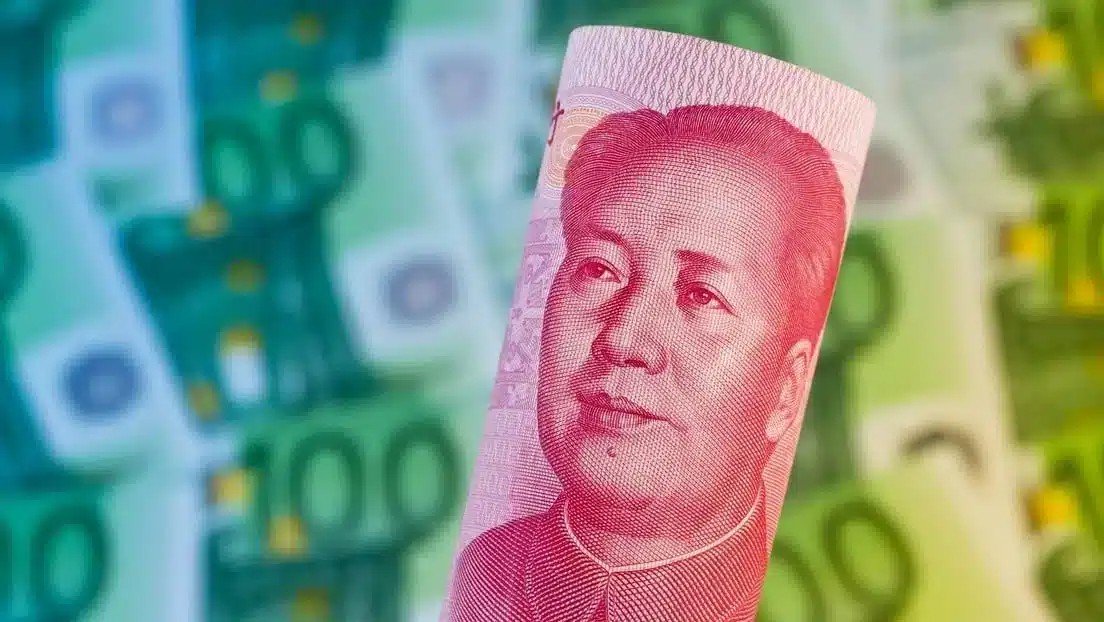Beijing’s decision to keep doing business with Moscow after the full-scale invasion of Ukraine in February 2022, along with the nature of Western sanctions, has saved the Kremlin from economic and political disaster. China has not only opened up its market for Russian energy exports, but also become a crucial source of imports for Russia. As a result, economic integration between the two countries has accelerated dramatically: in 2023, the yuan became the most popular currency on the Moscow Exchange, beating even the U.S. dollar.
China tells Western countries it respects their sanctions on Russia, but it operates on the principle of “everything that is not banned is allowed.” The real beneficiaries of Moscow’s “pivot to the East” have been second- and third-tier Chinese companies, particularly banks. At the level of cross-border transactions, payment systems for Russian rubles and Chinese yuan have replaced the SWIFT global bank messaging network and other traditional financial structures.
These payment systems are now capable of processing sizable transactions that include third parties. The nature of Western sanctions on Russia is pushing Beijing toward further increasing the number of yuan payments that go via this route. This system is here to stay now, even if the war in Ukraine were to end tomorrow and Russia were to rebuild ties with the West.
Amid the growing economic connections between Moscow and Beijing, the annual value of bilateral trade has reached $240 billion, according to Chinese customs data. Chinese exports to Russia in 2023 exceeded $111 billion: 67 percent more than in 2021. And Chinese goods now account for 38 percent of Russia’s imports, while 31 percent of Russia’s exports go to China.
China has even acquired a monopoly on a whole range of goods that Russia imports, which has enabled it to raise prices for Russian consumers compared with customers in other countries. Thanks to Russia, for example, China has overtaken Japan to become the world’s biggest exporter of transportation equipment. In 2023, Chinese car exports to Russia rose 594 percent, while exports of trucks and tractors rocketed almost 700 percent.
Of course, Russia is a far less significant trade partner for China than China is for Russia. Russia’s share of China’s total trade turnover between January and October 2023 was just 3.9 percent. Russian goods only made up 5.1 percent of China’s imports, while Russia was the destination for just 3.3 percent of Chinese exports.
Payments for Chinese goods shipped to Russia and Russian goods sent to China are mostly made in yuan. Even before the war in Ukraine, Moscow was keen to boost its use of different currencies and decrease its dependence on the U.S. dollar. But the process was a slow one. Convincing Russian companies to use currencies other than the dollar was just half the battle: agreement was also required from foreign partners.
Russia’s shift to using yuan in foreign trade has been dramatic. In December 2023, about one-third of Russia’s foreign trade was regularly settled in yuan. There was $68.7 billion held in yuan in Russian banks in 2023 (exceeding the $64.7 billion held in U.S. dollars). The value of yuan-denominated loans in Russia has more than tripled to $46.1 billion (mainly via the conversion of debt previously held in U.S. dollars and euros). And the share of yuan in trades on the Moscow Exchange in 2023 was 42 percent, exceeding that in the U.S. dollar.
It’s true that Washington’s decision at the end of 2023 to allow secondary sanctions to be imposed on financial institutions that work with Russia’s defense sector has complicated cross-border transactions. Some Chinese banks (including Ping An Bank, Bank of Ningbo, China Guangfa Bank, Kunshan Rural Commercial Bank, Great Wall West China Bank, Shenzhen Rural Commercial Bank, Dongguan Rural Commercial Bank, and China Zheshang Bank) have stopped accepting Russian payments entirely, while the average processing time for such payments rose to eighteen days. In March 2024, Chinese exports to Russia fell (by 16 percent year-on-year) for the first time since 2022. The trend continued in April with a drop of 13.5 percent.
However, the effect of U.S. sanctions has been limited, and trade is a long way from grinding to a halt. Indeed, the proportion of trades made in yuan on the Moscow Exchange has continued to increase, rising from 46.6 percent in February to 53 percent in March.
Nor have all Chinese banks stopped dealing with Russian clients. Regional banks—of which there are more than 4,500 in China—still work with Russia. Sanctions-busting schemes that involve a multitude of middlemen from other jurisdictions are also spreading. If the typical scheme before the secondary sanctions signed off last year was “client–Russian bank–foreign bank–client,” now as many as five other banks can be involved.
When some Chinese banks stopped working with Russian companies, the office of Russia’s state-owned VTB Bank in Shanghai experienced a spike in demand for its services, and saw lines of people wanting to open accounts. Chinese regional banks have also spoken of lacking staff to service Russian clients. But these all look like temporary problems.
International clearing for these sorts of transactions is carried out by Russian and Chinese lenders, which use local systems. After the introduction of Western sanctions against Russia in 2014, Moscow began to develop a SWIFT alternative: the System for Transfer of Financial Messages (SPFS). Its use significantly reduced the effect of sanctions imposed in 2022: it meant, for example, that despite the exit of VISA and Mastercard, payments using their cards could still be made inside Russia. In 2023, Russia introduced a regulation banning the use of SWIFT.
SPFS can also be used to make cross-border payments. By the end of 2023, 557 banks and companies—including 159 non-residents from twenty countries—had signed up. These are mainly countries that have close relationships with Moscow, like Kazakhstan, Belarus, and Cuba. Negotiations are under way to allow Chinese banks to join.
At the same time, Russian banks have been signing up for China’s Cross-Border Interbank Payment System (CIPS). They include both very small and very large lenders, and many of them have been sanctioned by the United States and the European Union and blocked from SWIFT. In 2023, at least twenty-three Russian banks signed up for CIPS. It’s telling that the average number of daily transactions via CIPS increased 50 percent in 2022, and was up 25 percent in the first nine months of 2023.
CIPS is even being used by third countries to make payments to Russia. In April 2023, for example, Bangladesh settled with a Russian nuclear power developer in yuan. Before the war, such operations were rare—but now they are becoming common. In this sense, Western sanctions against Russia have been a huge boon for Beijing as they have led to a strengthening of the yuan’s international status.
Russia and China like to call their relationship a “no limits” partnership. But the reality is very different. Despite the record trade figures, the balance of power is tipped toward China. By observing Western sanctions, Beijing is supplying not what Russia needs, but what it can make money on. The value of dual-use civilian and military goods sold to Russia by China in 2023 only increased by $1 billion (total exports to Russia rose 47 percent to $111 billion in the same period).
It’s obvious that most Chinese companies prefer not to risk losing access to Western markets for the sake of access to the Russian market. Moscow has become dependent on Chinese supplies, and it would now be extremely difficult to find a replacement. Diversifying its international trading partners is all but impossible for Russia because of Western sanctions: not just because of the restrictions, but because often those countries that have not imposed sanctions do not have the goods that Moscow wants.
There are also limits to cross-border payments. China is not seeking to help Russia by increasing the role of the ruble in transactions between the two countries, and Chinese banks have been tightening compliance requirements for many Russian companies.
At the same time, Beijing of course welcomes the increased use of Chinese payment systems. Western sanctions against Russia have allowed China to thoroughly test these systems, making them more flexible and easier to use. It’s not a panacea for Russia’s payment problems, nor does it do much harm to the U.S. dollar, but it does weaken the impact of sanctions.
In many ways, the war in Ukraine amounts to an enormous present from Russia to China, and it has strengthened China’s geopolitical ambitions to become an alternative center of global influence. Beijing has been able to thoroughly test financial systems that offer an alternative to the West, while second- and third-tier Chinese companies have acquired access to a large new market.






